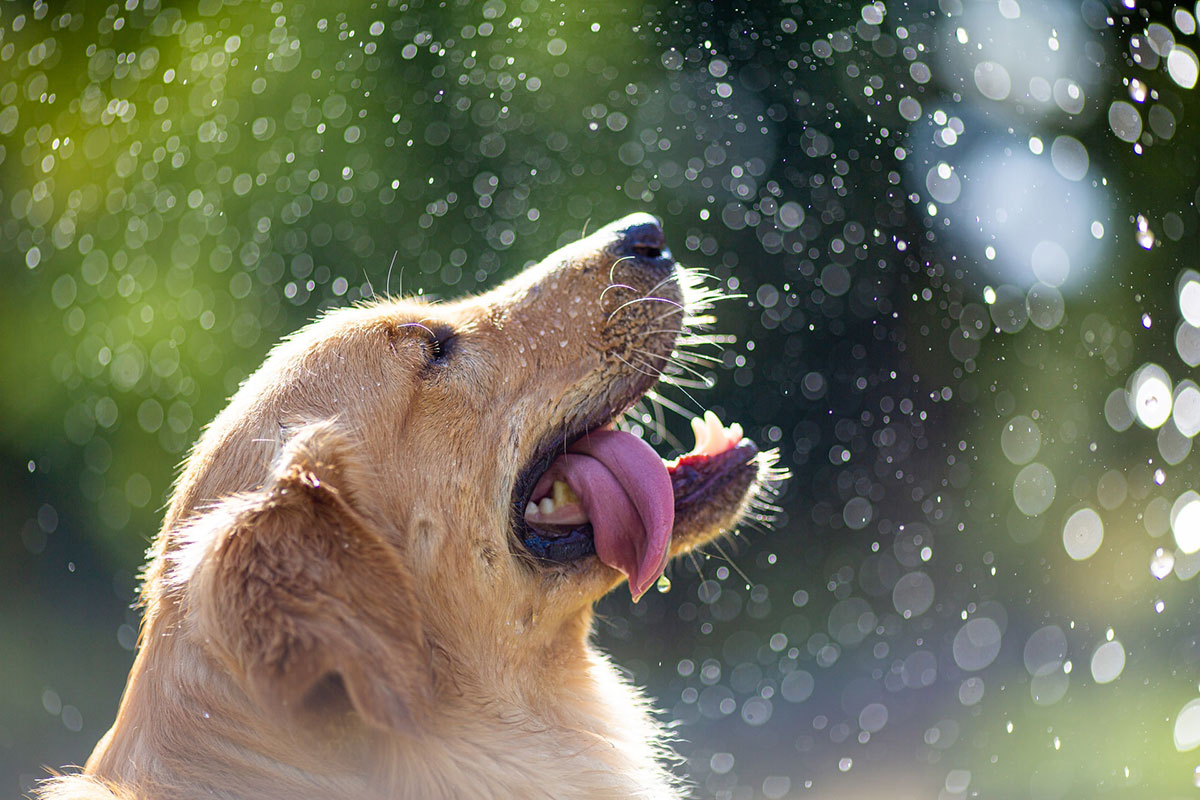Dog barking is a normal way for dogs to communicate. They bark for many reasons, like getting attention, warning others, or showing excitement. It’s important to know why your dog barks to solve the problem.
Effective dog barking training can stop your dog from barking too much. At BarkingBatty, we offer tips and advice to help dog owners with barking issues.
Understanding why your dog barks is the first step to changing their behavior. We aim to make your life with your pet more peaceful and happy.
Why Dogs Bark at Other Animals
It’s important to know why dogs bark at other animals. They bark for reasons like anxiety, excitement, and protectiveness. Knowing the cause helps dog owners start solving the problem.
Dogs use barking to communicate their feelings. It can mean they’re alert, warning, or even ready to play. For example, a dog might bark at another animal because it’s scared or excited to play.

| Reason for Barking | Description |
|---|---|
| Anxiety | Dogs may bark due to feeling uneasy or threatened by other animals. |
| Excitement | Barking can be a sign of eagerness to interact or play with other animals. |
| Protectiveness | Some dogs bark to protect their territory or family from perceived threats. |
For more specific help with barking in breeds like German Shepherds, check out how to stop a German Shepherd from. Knowing why your dog barks is key to creating a good training plan.
Identifying Your Dog’s Reactive Barking Type
To tackle your dog’s reactive barking, first identify the type. Dogs bark for many reasons, like anxiety, excitement, or alerting to threats.
Types of Reactive Barking: Knowing why your dog barks is key. Anxious barking happens when they feel scared or uneasy. Excited barking is when they can’t wait to play or interact.
Assessing the Severity of Barking
It’s important to know how bad your dog’s barking is. You can do this by watching and recording their barking.
- Identify what makes them bark.
- Keep track of how long and loud they bark.
- Watch how they act when they bark.
The table below helps you record and understand your dog’s barking:
| Date | Trigger | Duration of Barking | Intensity (1-5) | Body Language |
|---|---|---|---|---|
| 02/10/2023 | Other dogs | 5 minutes | 4 | Tense, raised hackles |
| 02/12/2023 | Squirrels | 3 minutes | 3 | Alert, barking loudly |
| 02/15/2023 | Strangers | 2 minutes | 2 | Wagging tail, barking |

By understanding your dog’s barking, you can create a better plan to help them.
Assessing Your Dog’s Specific Triggers
Knowing what makes your dog bark is key to training them well. Things like other dogs, strangers, and loud noises can set them off. Finding out what triggers their barking is the first step to solving the problem.
Common Triggers for Barking:
- Other dogs or animals
- Strangers or visitors
- Loud noises or unexpected sounds
To figure out what triggers your dog’s barking, keep a log of when and where it happens. This will help you spot patterns and common causes. Think about the situation, where you are, and what might be causing the barking.

| Trigger | Context | Response |
|---|---|---|
| Other dogs | During walks | Barking, pulling on leash |
| Strangers | At home, visitors | Barking, alerting |
| Noises | Loud music, thunderstorms | Anxious barking |
By knowing and recording your dog’s triggers, you can create a training plan just for them. This will help you tackle their barking in a way that works.
Essential Training For Dogs Who Bark At Other Animals
Training dogs who bark at other animals needs a special approach. It’s about using positive reinforcement. This method rewards good behavior instead of punishing bad ones.
Positive Reinforcement Techniques
Positive reinforcement is a key in dog training. It helps your dog stay calm around other animals. Rewards can be treats, praise, or playtime. It’s important to reward them right away and consistently.
Some great positive reinforcement methods include:
- Desensitization: Slowly introduce your dog to other animals at a safe distance. Start when they’re not reacting.
- Counterconditioning: Make your dog associate other animals with good things, like treats and praise.
To use desensitization and counterconditioning, follow these steps:
- Begin by showing your dog the trigger from far away, when they’re calm.
- Give them treats and praise for staying calm.
- Slowly get closer over time, still rewarding calm behavior.

Being consistent and patient is key. It might take time for your dog to change. But with regular training, you’ll see big improvements.
By using these positive reinforcement methods, you can help your dog be calmer around other animals. This will reduce barking and improve their behavior.
Apartment-Specific Training Challenges
Living in an apartment can be tough for dog owners, mainly because of unwanted barking. The close quarters to neighbors mean you must stop barking fast to avoid complaints.
Apartment size is another big issue. It can make barking worse because dogs don’t get enough to do. Regular exercise and mental games are key to cut down on barking from boredom or too much energy.
There are ways to tackle barking in apartments. Teaching a “quiet” command works well. Also, getting your dog used to things that make them bark is helpful. For tips on stopping territorial barking, check out this resource.
| Training Technique | Description | Benefit |
|---|---|---|
| Quiet Command | Teach your dog to stop barking on command | Immediate barking cessation |
| Desensitization | Gradually expose your dog to barking triggers at a low level | Reduced reaction to triggers |
| Exercise and Stimulation | Ensure your dog gets enough physical and mental stimulation | Reduced barking due to boredom or excess energy |
Knowing the special challenges of apartment living helps. Using these training methods can really cut down on barking. It makes life better for you and your neighbors too.
Focus Training and Redirection Techniques
Teaching your dog to focus on you can cut down on barking at other animals. Focus training and redirection are key for dog owners with reactive barking. By teaching your dog to look away from triggers, you can lessen unwanted barking.
Using specific commands to refocus your dog’s attention is very effective. Commands like “watch me” and “leave it” help a lot in redirecting your dog’s focus.
Using Commands to Refocus
To use the “watch me” command, start with your dog on a leash or in a controlled area. Hold a treat in front of their nose, then move it to your face, saying “watch me.” Reward them with the treat and praise when they look at you. Keep doing this until they learn the command.
The “leave it” command is also crucial. Start by placing a treat in front of your dog and say “leave it.” If they try to take it, cover it with your hand and say “no.” Praise them and give them a different treat when they ignore the treat.
Key Commands for Redirection:
- Watch Me: Redirects your dog’s attention to you.
- Leave It: Teaches your dog to ignore triggers.
- Sit: Helps in calming your dog and reducing reactivity.
Consistency is crucial in training your dog. Practice these commands often, and add more distractions as you go. For more tips and advice, check out Supertails for more resources.
| Command | Purpose | Training Tip |
|---|---|---|
| Watch Me | Redirects attention to you | Use treats to guide your dog’s gaze to your face. |
| Leave It | Teaches your dog to ignore triggers | Cover the treat with your hand if your dog tries to take it. |
| Sit | Calms your dog and reduces reactivity | Reward your dog for remaining seated. |
Tools and Products That Can Help
There are many dog training aids to help reduce barking. Dog owners can pick from a wide range of products. These are designed to tackle barking problems.
Training Collars: Training collars are a common tool in dog training. They come in types like vibration, sound, and static correction. The right collar depends on the dog’s personality and the owner’s training style.
Barking Reduction Tools: There are also other tools to reduce barking. For example, anti-barking devices that make a sound dogs don’t like but humans can’t hear. These can work well if used right.
- Ultrasonic anti-barking devices
- Vibration collars
- Training clickers
When picking dog training aids, choose humane ones that fit positive reinforcement training. The aim is to teach the dog, not punish it for barking.
Using the right tools with consistent training can help manage a dog’s barking. It’s about finding the right balance and being patient with the training.
Daily Management Strategies
It’s key to use daily management strategies to cut down on a dog’s barking. A good plan can tackle the main reasons for barking and lessen it.
Key Components of Daily Management include regular exercise, consistent training, and making necessary environmental changes. Exercise helps burn off excess energy that might contribute to barking, while training teaches the dog to respond to commands that can help calm them.
Creating a Barking Management Plan
To make a good barking management plan, first find out what makes your dog bark. This could be other animals, strangers, or noises. After you know what triggers their barking, you can start working on solutions.
| Strategy | Description | Benefit |
|---|---|---|
| Regular Exercise | Daily walks and playtime | Reduces excess energy |
| Consistent Training | Teaching “quiet” command | Helps control barking |
| Environmental Changes | Blocking view of street | Reduces trigger exposure |
By adding these strategies to your daily routine, you can greatly reduce your dog’s barking. It’s about making a calm and balanced environment where your dog doesn’t need to bark as much.
Training for Specific Animal Encounters
Teaching dogs to stay calm around other animals is key for their happiness. Dogs often get upset when they meet other animals on walks. Desensitization and counterconditioning are great ways to get them ready for these meetings.
Desensitization means slowly getting your dog used to things that make them bark, starting far away. This makes them less upset over time. Counterconditioning is about making good things happen when other animals are around, like treats and praise.
Desensitization and Counterconditioning Techniques
To use desensitization and counterconditioning, follow these steps:
- Find out what makes your dog bark.
- Begin by showing them the triggers from far away, so they don’t bark.
- Give them treats and praise for staying calm.
- Slowly get closer to the triggers as they get better.
A good plan for desensitization and counterconditioning could look like this:
| Session | Trigger Distance | Reward |
|---|---|---|
| 1 | 50 feet | Treats and praise |
| 2 | 40 feet | Treats and praise |
| 3 | 30 feet | Treats and praise |
Adding desensitization and counterconditioning to your dog’s training helps them handle social situations better.
When and How to Seek Professional Help
Knowing when your dog needs professional help for barking is key. If your dog keeps barking at other animals or does it a lot, it’s time to get help. A professional dog trainer or behaviorist can be very helpful.
Signs That Professional Help is Needed:
- Barking persists despite consistent training efforts
- Barking is accompanied by aggressive behavior
- Barking is causing significant distress or disruption
A professional can give you specific advice and help you create a training plan. They can find out why your dog is barking and suggest ways to stop it.
- Look for certified dog trainers or behaviorists with experience in addressing barking issues.
- Ask for referrals from veterinarians, friends, or family members.
- Ensure their training methods align with your values and goals.
Getting professional help is a smart move to fix your dog’s barking. With the right advice, you can teach your dog to be calm around other animals.
Conclusion
Understanding why dogs bark at other animals is key. By using the right training, owners can cut down on barking. This improves their bond with their pets.
A good training summary starts with finding the cause of barking. Then, use focus training and redirect their attention. Managing daily interactions is also important.
Good barking management makes life better for dogs and owners. With patience and the right tools, owners can make a dog barking conclusion that works for all.
Using these strategies, owners can have a quieter home. They can also grow closer to their pets.






